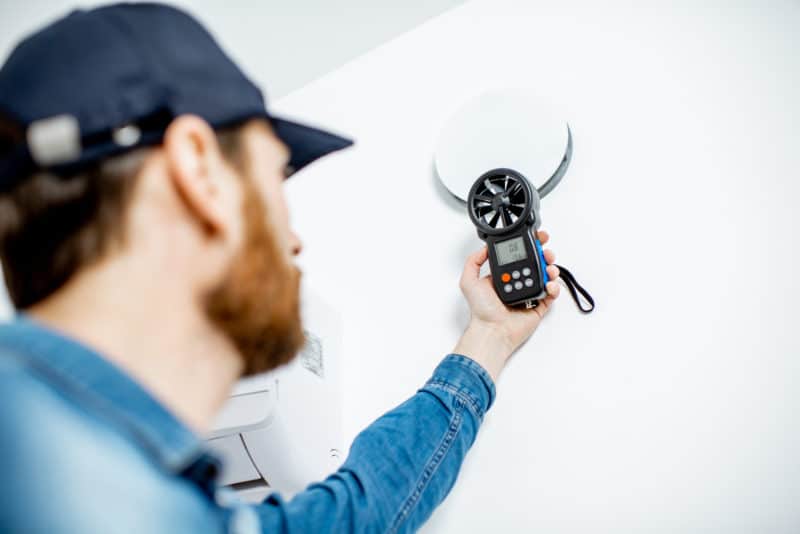
With the on-going COVID-19 pandemic, fears about viruses, bacteria, and indoor pollutants are at an all-time high. Millions of Americans are under stay-in-place orders or are working from home. Schools in Bement, IL, and across the country have closed and children are doing lessons on their computers.
Even before COVID-19, autoimmune, inflammatory, & infectious diseases were on the rise: MERS, Ebola, H1N1, West Nile, and many others. There has never been a greater need to understand the impact and benefits of improved Indoor Air Quality (IAQ) for the health and safety of the people we care about most—our families and loved ones! With so many products, claims, confusing standards, and all the industry jargon out there, how can customers cut through all of the clutter? Homeowners often wonder:
- What types of Indoor Air Quality devices and technologies are available?
- Are these devices effective—do they really work?
- What are the facts & data on these items for improving human health, comfort, and safety?
In this series of blogs—I would like to share our “3 Lines of Defense” for Improved IAQ and several IAQ-Tips along the way. Just like a good defense in football has 3 distinct levels—1) linemen 2) linebackers and 3) Secondary/safety—a good IAQA strategy incorporates the same approach. All 3 lines work together to provide better air to breathe, enhanced health, and well-being for people, and improved efficiency and longevity for HVAC equipment.
But first, let’s start with the facts about the quality of our indoor air.
Or should I say the lack of air quality? According to the EPA, “Indoor Air Pollution is among the top 5 environmental health risks.” Human beings today spend 70-90% of our time indoors. Homes are built with tighter envelopes and better insulation—however, the air quality is often up to 5 times more polluted than outdoor air! In addition, tighter homes can limit the natural exchange leaving excessive humidity trapped inside the home.
And, just like we have learned with COVID-19, some people with certain conditions may be at greater risk:
- People with cardiovascular diseases
- People with lung-disease, Including asthma and COPD
- Children & teenagers
- Older adults
- People with diabetes or obesity
What are the sources of these pollutants & humidity?
Normal activities like cooking, cleaning, & taking showers are major contributors. In fact, these daily activities add 25 pounds of moisture to your home! Other sources of pollutants include people, pets, dust particles, dust mites, gasses called Volatile Organic Compounds. Everyday items like paint, building materials, and cleaning supplies are some common examples of VOCs. Viruses, bacteria, and mold that can lurk in cold, dark, wet places—like the coil in your air-conditioner. DID YOU KNOW—42,000 dust mites can live in just 1 ounce of dust—YUCK!
Speaking of YUCK
IAQ Tip: Have Annual Maintenance for your HVAC and Plumbing equipment performed by a professional.
These cold, dark, & wet areas are breeding grounds. One of the best things a homeowner can do is invest in annual maintenance for their HVAC system. Conducting regular maintenance promotes system efficiency and healthy, clean air along with supporting lower utility costs, guarding against unexpected failures, and prolonging equipment life. Talk about bang for the buck! We have all heard the saying “an ounce of prevention beats a pound of cure” right?
IAQ-TIP —UV Lights can be very effective at keeping these coils clean and can help to reduce VOC’s.
While UV Bulbs (single or dual) must be replaced every 1-3 years (newer LED bulbs last even longer), they can be a money saver when you consider that “Dirt & Neglect” are the number 1 cause of system failure,” according to Energy Star.
In the next Blog—we will Break down the First line of defense against pollutants—FILTRATION!
SOURCES:
2016 ASHRAE HVAC Systems and Equipment Handbook
EPA Residential Air Cleaners A Technical Summary https://www.epa.gov/sites/production/files/2018-07/documents/residential_air_cleaners_-_a_technical_summary_3rd_edition.pdf
2018 EPA “Guide to Air Cleaners in the Home”: https://www.epa.gov/sites/production/files/2018-07/documents/guide_to_air_cleaners_in_the_home_2nd_edition.pdf
EPA EnergyStar Guide to Efficient Heating & Cooling: https://www.energystar.gov/ia/partners/publications/pubdocs/HeatingCoolingGuide%20FINAL_9-4-09.pdf
US Department of Energy: https://www.energy.gov/energysaver/maintaining-your-air-conditioner





